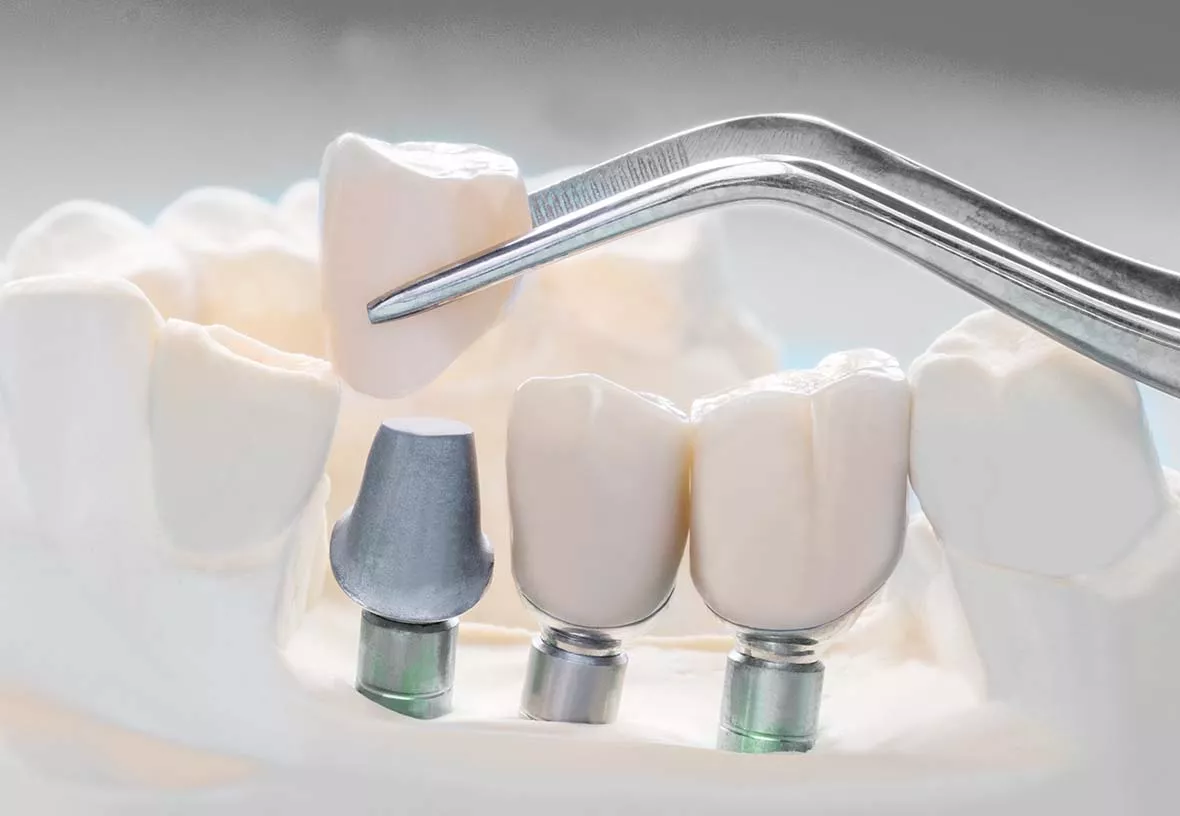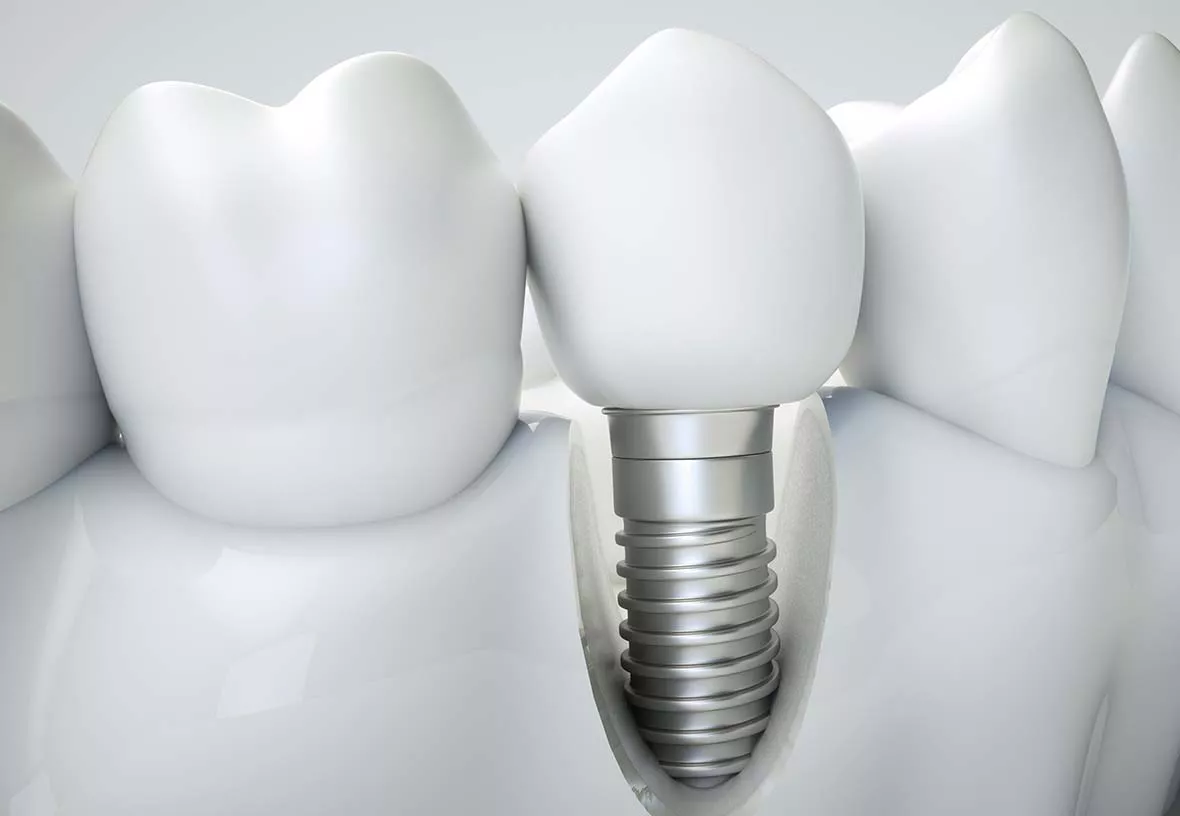A Natural Replacement for Missing Teeth
Dental implants are a permanent replacement for missing teeth. Implants look and feel like natural teeth and help prevent bone loss in your jaws. We provide dental implant placement using state-of-the-art materials and techniques to give you a brand new smile.

Benefits of Dental Implants
- Lifelong replacement for missing teeth
- Prevent bone loss and preserve jawbone structure
- Precision implant placement
- Natural look, feel, and function
What Are Dental Implants?
Dental implants are artificial tooth roots that are surgically placed in your jaw. Implants form a permanent natural bond with your jawbone and create a secure attachment for restorations such as crowns and bridges. The restorations are designed to blend with your smile and restore the function of your natural teeth.
Dental Implant Procedure
Step 1: Placing the Implant
We begin by examining your mouth and jaws to find the ideal location for the implant and see if enough bone is present to support the implant when it is placed. Once we find the right spot, we surgically place the implant in your jawbone.
Step 2: Attaching the Abutment
Once the implant has healed and bonded with your jawbone, we attach the abutment, a small device that allows crowns and restorations to be attached to the implant.
Step 3: Design and Place Crown or Restoration
After the abutment has been attached to the implant, we design and produce a dental crown, bridge, or other restoration. Once we check the fit, we secure the restoration to the abutment to restore your smile.

Frequently Asked Questions
Would I be a candidate for a dental implant?
Dental implants work for many patients who have lost teeth. During your implant consultation, we’ll assess your dental health and what type of dental restoration you need. We’ll also check that you have enough healthy bone in your jawbone to support the implant. In cases where there isn’t enough bone, we may recommend a bone graft to strengthen the area where the implant will be placed.
Can I get an implant if I’m missing multiple teeth?
Yes. An implant-supported bridge or denture will be an excellent solution if you are missing multiple teeth. Talk to your dentist to discuss your options.
How long does implant treatment take?
The treatment time for most patients is 2-4 months. Dental implant treatment usually takes two or three appointments. The treatment time varies depending on whether you need a bone graft and how long the implant takes to heal and integrate with the bone. Creating and placing the crown or restoration can take 1-2 weeks.
Are implants permanent?
Dental implants can last your entire life with proper care and regular dental examinations. Crowns and restorations usually last 10-20 years, depending on your eating and hygiene habits.
Will my implants feel like natural teeth?
Dental implants don’t contain nerves, so they aren’t sensitive to temperature and pressure but feel and look like natural teeth.
How do I take care of my implants?
You should brush and floss around your implants just like your other teeth. Doing so will help prevent staining on your restorations and gum infections around the base of your implants. It’s also important to go for regular dental examinations to ensure your implant is healthy.

